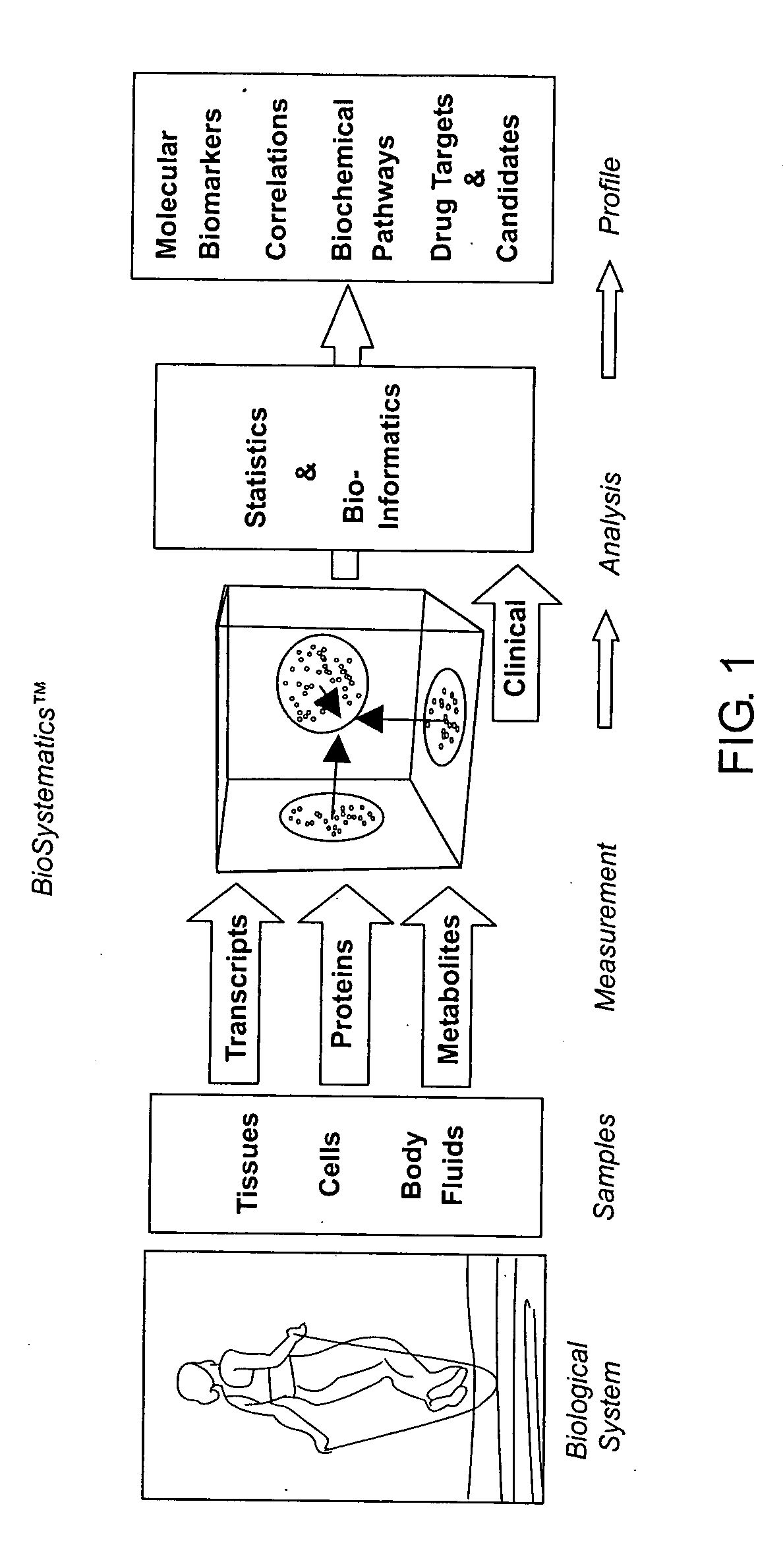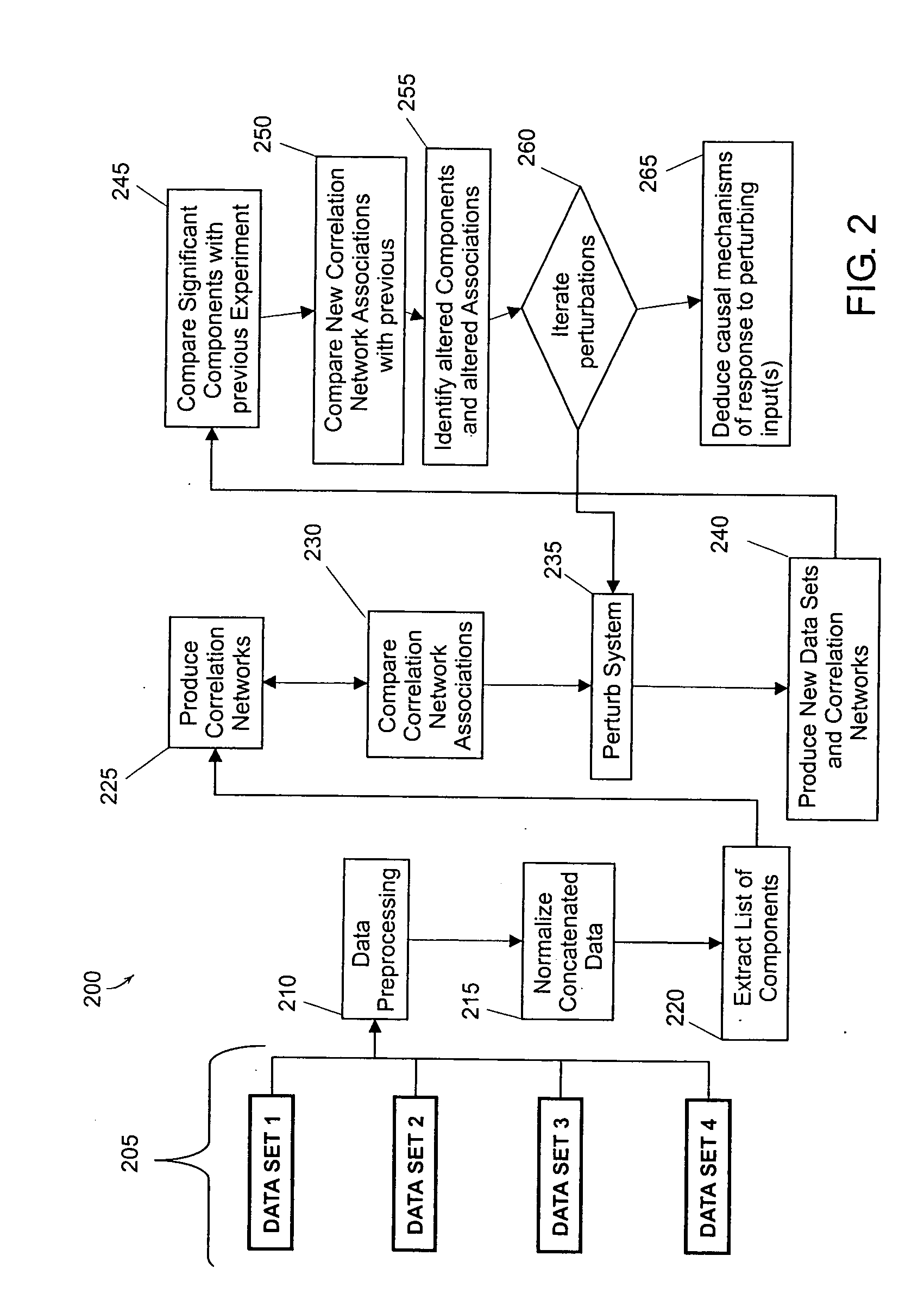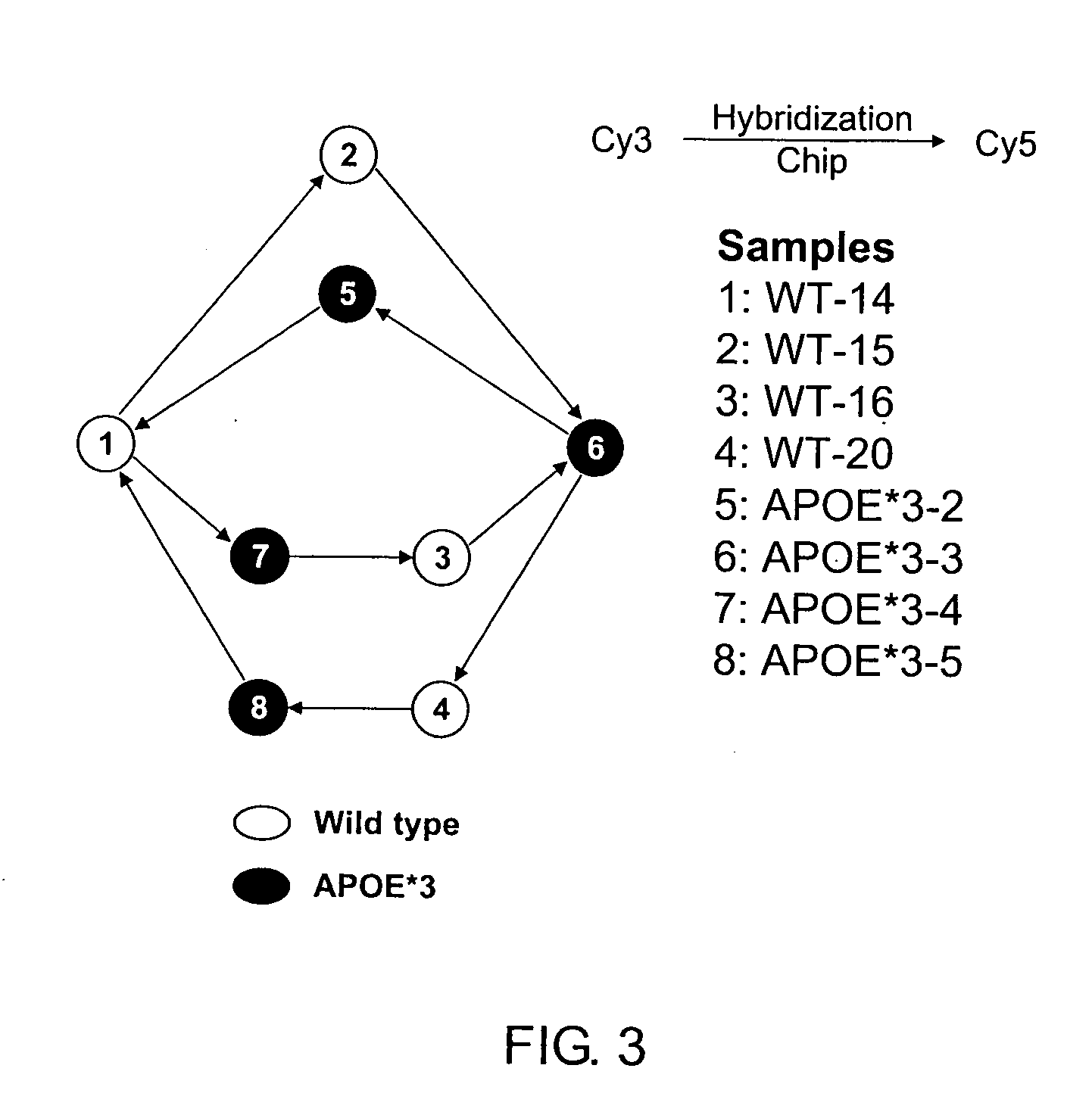Methods and systems for profiling biological systems
- Summary
- Abstract
- Description
- Claims
- Application Information
AI Technical Summary
Benefits of technology
Problems solved by technology
Method used
Image
Examples
example 1
Normalization of Gene Expression Data from the Liver of an APOE*3-Leiden Transgenic Mouse
[0126] To illustrate the normalization method, a study of the ApoE3-Leiden transgenic mouse was performed. A total of 9,596 genes were analyzed using ten cDNA microarrays. Samples were collected from a total of four ApoE3-Leiden transgenic (TG) mice and four wild type (WT) mice. An optimized design of the experiment is shown in FIG. 3. The variety vector was therefore
Vars=[1 1 1 2 2 1 1 2 2 1 1 2 2 1 1 2 2 2 2 1]. (8)
[0127] A t-test was applied, comparing the normalized values of transgenic and wild type mice. FIG. 4 shows the significance plot of the data based on p-values from the t-test and fold ratios. The horizontal line on top shows the overall likelihood P(p)=0.05 cutoff, while the lower line shows the cutoff, p=0.05. Only 16 genes satisfy the most stringent former criterion, while there are 713 genes in the p<0.05 range.
[0128] Protein data from liver. Eight samples from eight differ...
example 2
Systems Biology Analysis of the APOE*3-Leiden Transgenic Mouse
[0133] As a test case for the application of systems biology analysis to a mammalian system, the apolipoprotein E3-Leiden (APOE*3-Leiden, APOE*3) transgenic mouse was selected. Apo E is a component of very low density lipoproteins (VLDL) and VLDL remnants and is required for receptor-mediated re-uptake of lipoproteins by the liver. [Glass and Witztum, Cell 104, 502 (1989).] The APOE*3-Leiden mutation is characterized by a tandem duplication of codons 120-126 and is associated with familial dysbetalipoproteinemia in humans. [van den Maagdenberg et al., Biochem. Biophys. Res. Commun. 165, 851 (1986); and Havekes et al., Hum. Genet. 73, 157 (1986).] Transgenic mice over expressing human APOE*3-Leiden are highly susceptible to diet-induced hyperlipoproteinemia and atherosclerosis due to diminished hepatic LDL receptor recognition, but when fed a normal chow diet they display only mild type I (macrophage foam cells) and II (f...
example 3
Systems Biology Analysis of the APOE*3-Leiden Transgenic Mouse
[0154] The results of combined mRNA expression, soluble protein, and lipid differential profiling analyses applied to liver tissue, plasma, and urine taken from wild type and APOE*3-Leiden mice that were fed a normal chow diet and sacrificed at 9 weeks of age are presented below. Results from each biomolecular component type class analysis reveal the presence of early markers of predisposition to disease. In addition, results of a correlation analysis are suggestive of networks of molecules—spanning genes, proteins and lipids—that undergo concerted change.
[0155] Animals. APOE*3-Leiden transgenic mouse strains were generated by microinjecting a twenty-seven kilobase genomic DNA construct containing the human APOE*3-Leiden gene, the APOC1 gene, and a regulatory element termed the hepatic control region that resides between APOC1 and APOE*3 into male pronuclei of fertilized mouse eggs. The source of eggs was superovulated ...
PUM
| Property | Measurement | Unit |
|---|---|---|
| Biological properties | aaaaa | aaaaa |
Abstract
Description
Claims
Application Information
 Login to View More
Login to View More - R&D
- Intellectual Property
- Life Sciences
- Materials
- Tech Scout
- Unparalleled Data Quality
- Higher Quality Content
- 60% Fewer Hallucinations
Browse by: Latest US Patents, China's latest patents, Technical Efficacy Thesaurus, Application Domain, Technology Topic, Popular Technical Reports.
© 2025 PatSnap. All rights reserved.Legal|Privacy policy|Modern Slavery Act Transparency Statement|Sitemap|About US| Contact US: help@patsnap.com



